Ultimate guide to dog bones: Discover the best bones for dogs
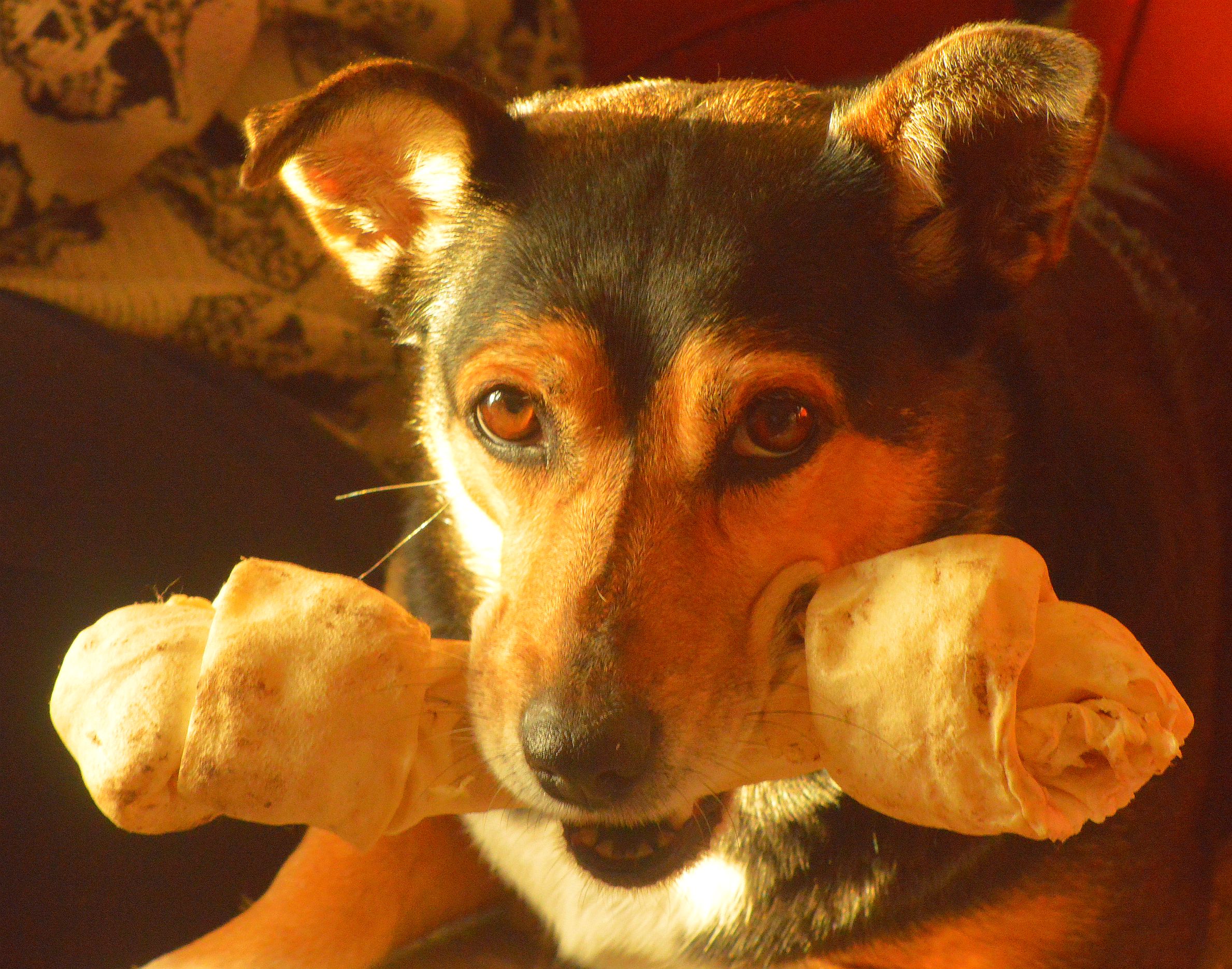
If you’re anything like me, then you know walking down the dog bone aisle at your local pet store can be overwhelming.
There are so many choices that the task of selecting the right option for your fluffy friend can seem daunting.
That’s why we created this ultimate guide to the best bones for dogs.
Benefits of Bones
There are many benefits to giving your dog a bone.
First, chewing is a natural behavior of dogs and it keeps them mentally and physically active and healthy. It stops boredom and prevents them from chewing on your personal belongings such as furniture and shoes.
In addition, chewing on bones promotes oral health. It does this by removing plaque and tartar build-up, freshens their breath, and maintains healthy gums. In teething puppies, chewing on bones can also alleviate gum pain and help to stimulate the growth of their adult teeth.
Dog Bone Safety
With so many different types of bones on the market, it is important to do a little bit of research before making a purchase.
A few things you’ll want to take into account are your dog’s size, oral health, and chewing habits.
As with all toys, treats, and bones, be sure to supervise your dog to ensure they don’t swallow large pieces. This can lead to choking or an obstruction in their digestive system. If your dog develops diarrhea, vomiting, or other signs of illness, be sure to call your veterinarian immediately.
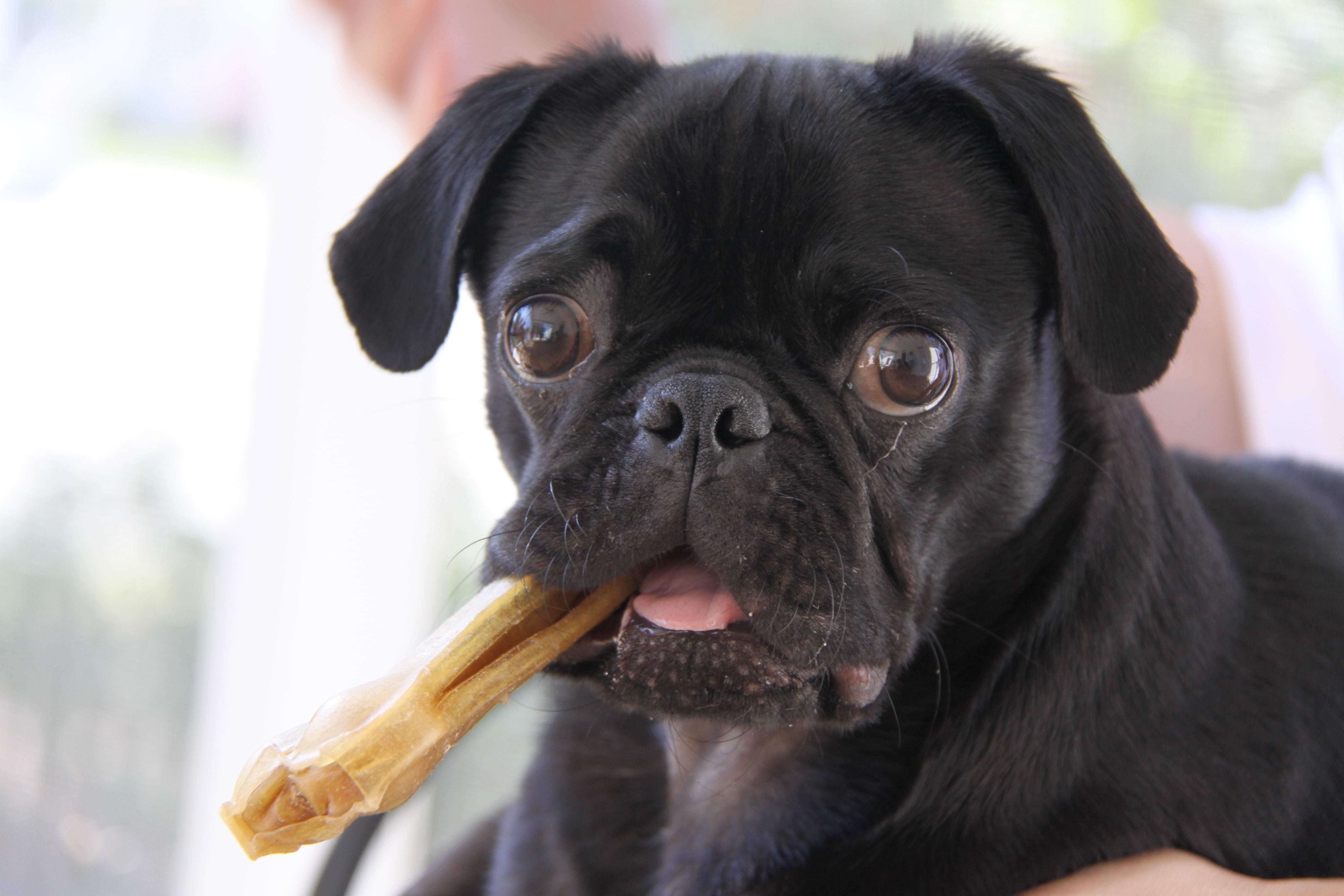
Image by: Eli Christman
Dog Bone Options
Rawhides
Most of us are familiar with rawhides. This is the chemically processed dried out skin of a cow and is usually flavored with chicken, beef, or peanut butter.
Pros
Inexpensive and you can buy them in bulk. They also come in many sizes, flavors, and varieties. Be sure to find an option that will please your pooch.
Most dogs will go crazy over rawhides. I’ve found they work great for oral health and can last awhile depending on the size of the rawhide and how fast your dog chews.
If digestibility is a concern, some brands make an easy-to-digest rawhide that will digest faster in your dog’s belly.
Cons
Rawhides are a controversial topic. This is mainly due to the lack of regulations for manufacturing them, and the chemicals used in processing.
It’s important to note some rawhides may not be safe for your dog. I always avoid rawhides made outside of the U.S.A. due to the possibility that they may contain toxic chemicals.
Usually dogs don’t have a problem digesting rawhides, but some dogs with more sensitive digestive tracts may have trouble with rawhides. It’s best to avoid them because of the risk of a blockage or illness.
Salmonella is another concern with rawhides, however, the risk is about as slim as it is for us humans to get food poisoning at a carnival or sporting event.
With that said Wholesome Hide is a fantastic option. They use American Beef and are 100% made in the USA. On top of that they don’t use any bleach or formaldehyde.
Bully Sticks
A bully stick is a cleaned and dried bull penis.
Pros
Dogs really love these. They can come in different lengths, usually 6, 9, and 12 inches. Some come in a plain, straight stick, while other varieties may come braided.
Bully Sticks undergo natural processing with no added chemicals. Plus, they offer nutritional value for your pup in the form of protein. Bully sticks can last for quite a while. They also are great for promoting oral health.
Cons
They have somewhat of an unpleasant odor and can be a bit pricey.
You can buy 100% all natural Bully Sticks for a great price from Amazon here.
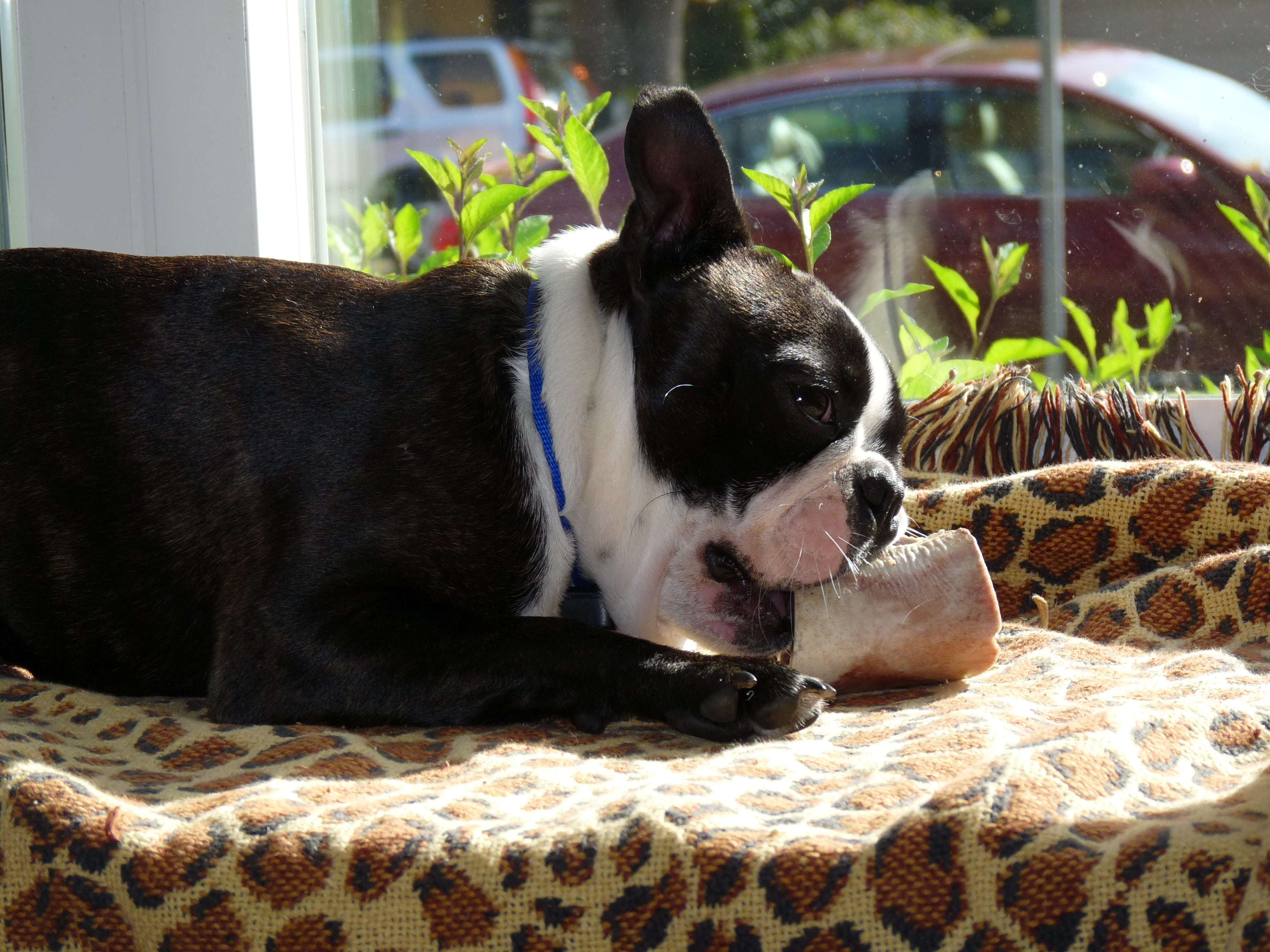
Image by: Craig Howell
Pig Ears
Pig Ears are, you guessed it, the ears of pigs. They come dried out and baked as a treat for your dog.
Pros
Carl, my dog you can read more about him here, finds them to be delicious. They are crunchy but delicate enough for senior dogs or dogs with oral problems, and they still promote good oral health.
You can usually purchase them for around a dollar, which makes them a very inexpensive option. I usually pick them out of a bin at my local pet store. Plus, they contain no added chemicals.
Cons
Even a small dog like Carl will consume pig ears in a matter of minutes.
Also, you shouldn’t give them to your dog every day since they contain a high-fat content. Due to the fat content, they aren’t a good option for overweight dogs either.
I’m always careful about where my dog eats his Pig Ears since they are greasy and can stain furniture.
Nonetheless I can’t keep Carl from his Pig Ears.
You can find the kind of Pig Ears I give Carl as a treat from Amazon here.
Chew Hooves
Chew hooves are cleaned and dried cow hooves.
Pros
Naturally produced with no added chemicals. They are inexpensive, and also provide nutritional value.
Also, they last a very long time. Depending on how often your dog chews on them, they can last for weeks or even months.
They are very thick and durable, but wouldn’t be a good option for dogs with poor teeth or gums.
Cons
Chew Hooves have a strong, unpleasant odor.
Due to their durability, the risk of your dog chipping or breaking a tooth is greater than with other bones. Your dog could also break off a sharp piece from the hoof, which could cause injury.
Real Recreational Bones
Recreational bones consist of real bones that are specifically treated for your dog. This means they can enjoy hours of chewing pleasure.
Typically, they make them from the leg, knuckle, or joint bones of animals like cows, pigs, or lambs.
Pros
Naturally processed and they provide nutritional value for your pup. They are durable and can last for hours, if not weeks. There are many sizes and varieties of recreational bones to choose from. Plus, they are a very affordable option.
Cons
Real bones can sometimes splinter and break off into sharp pieces risking the possibility of injury. This makes real bones a bad option for dogs with sensitive stomachs or smaller mouths.
I recommend Butcher’s Block Bones; they make a great natural bone. Get Butcher’s Block Bones here.
Important Note on Dog Bones
There is much debate over whether people should feed their dog’s real bones from home and if raw vs. cooked bones are better. In my opinion, it’s better to go with commercially produced bones as these are specifically prepared for dogs to digest.
In addition, not all types of bones are appropriate for dogs to eat. Never give your dog bones from fish, poultry, ribs, and other small bones.
If you do choose to give your dog bones that you make at home, be sure not to bake them. Baking dries the bones out and makes them brittle. Brittle bones can split and cause your dog injury or pose a choking risk.
If you do opt for cooked bones, boiling them is the best and safest method for your pet.
It is entirely up to you to determine what type of bone, if any, you give your pet. After all, you know your dog better than anyone else. Never give real bones to dogs with sensitive digestive tracts and small or sensitive mouths.
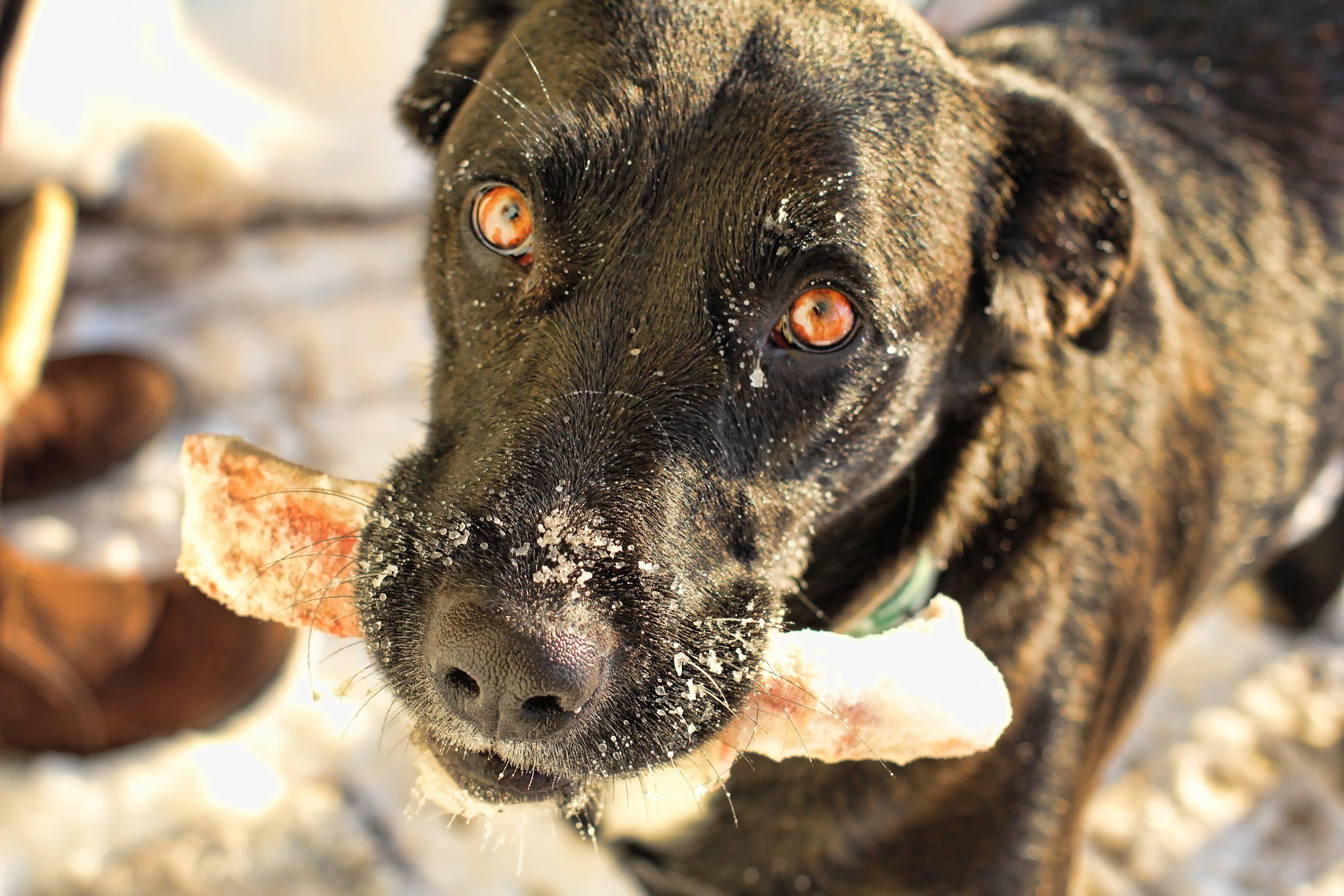
Image by: Cory Denton
Deer and Elk Antlers
Antlers are real pieces of either deer or elk antlers, usually between 6 and 12 inches in length.
They are collected from antlers that are naturally shed in the mating process. This makes them a sustainable and natural option.
Pros
Antlers are natural and provide nutritional value. They are durable and can last for months. They have a rough, rigid surface which is great for cleaning your dog’s teeth and promoting oral health.
On the inside is a delicious marrow that a lot of dogs, including Carl, love.
Cons
Antlers are extremely tough on teeth, and I wouldn’t recommend them for a senior dog or a dog with sensitive teeth. Due to their toughness, they can pose the risk of breaking your dog’s tooth. Also, antlers can be a little pricey.
My dog absolutely loves antlers. However, after talking with other dog owners I’ve found them to be hit or miss. Some dogs don’t find them appealing at all. Remember to experiment and find out whether alters are right for your dog.
Heartland Antlers is a great option that Carl loves. Get Heartland Antlers here.
I also like the variety you get in size and shape from Antler Man. They sell antler pieces by the pound. Buy Antler Man Variety Pack here.
Bully Horns
Bully horns are made from the horns of cattle or water buffalos.
Pros
Dogs love these. They are low in fat and high in protein. Another benefit is they last a long time, often months. Also, they are available in a variety of sizes. Bully Horns are very durable and all natural.
Cons
They can sometimes be pricey but for how long they last, the value may be worth it. They can have a slight odor after a while. Due to their thickness, there’s a small risk of your dog breaking a tooth.
We recommend ABO Gear Bully Horns. They’re grass fed, free range and you can buy ABO Gear Bully Horns here.
Himalayan Chews
Himalayan Chews include a very hard cheese substance made from an ancient Himalayan recipe using yak or cow’s milk.
Pros
Himalayan Chews contain natural ingredients with no added preservatives or chemicals. They come in varying lengths, and are high in protein. Plus, they can last for hours.
Cons
Himalayan Chews can be a somewhat pricey. They can also split or break into shards, which could cause injury to your pup. They could also cause your dog to break a tooth. Another negative is that these chews tend to be high in calories.
Himalayan Dog Chews are made with super simple ingredients and are a nice change from the usual dog bone. You can check out more reviews and buy Himalayan Dog Chews here.
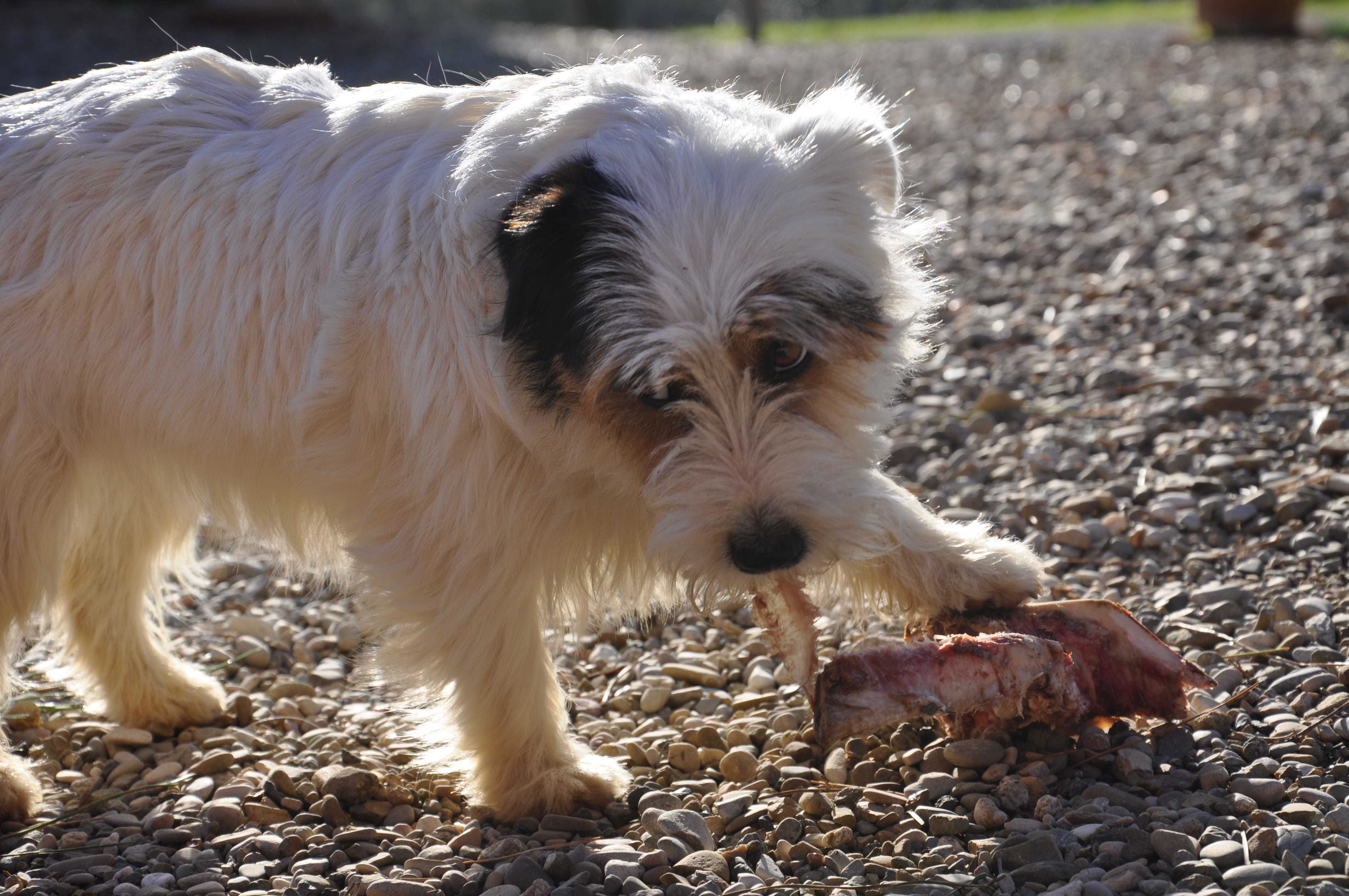
Image by: Salvadonica Borgo
Beef Tracheas
Beef Tracheas have several different names like Moo-Tubes or Windies.
The chews consist of the actual windpipe or trachea of the cow.
Pros
Dogs go crazy for tracheas. They are hollow and crunchy in a consistency, similar to a pig ear. This makes them great for dogs of all ages, even those with sensitive teeth.
Also, they are high in chondroitin and glucosamine, which promotes healthy joints. They are available in varying lengths, typically from 3 to 12 inches. Tracheas are affordable, but the best value is when you buy them in bulk.
Cons
Tracheas are a bit greasy and can leave stains on your furniture or fabric. I’m always careful when and where I give them to my dog for this reason.
Aggressive chewers or big dogs can devour a 12-inch trachea in just a few minutes so they don’t last very long, but they sure do enjoy it while it lasts. Buying them individually can sometimes be pricey vs. buying in bulk.
Top Dog Chews has an affordable 10-pack of Tracheas here.
Nylabones
This is a synthetic bone made from plastic, nylon, and rubber.
Pros
Nylabones promote oral health and come in many shapes, sizes, textures, and flavors to appeal to your pooch. They are affordable and durable.
Cons
Since they are nylon your dog shouldn’t ingest Nylabones. They even post a warning on their website that their products aren’t meant for consumption. Their warning states that, “During normal chewing, tiny bristle-like projections are raised that help clean teeth. If these tiny pieces (no larger than a small grain of rice) are ingested, they should pass through.” They recommend that you consult your veterinarian if your dog swallows anything larger.
If you choose to give your dog a Nylabone, make sure you keep them within eye sight. Supervision is key.
This American made Nylabone Dura Combo Pack is a great affordable option.
Dental Chews
Dental Chews are dog treats that specifically help to clean your dog’s teeth, freshen their breath, and promote healthy gums.
Pros
There are many varieties on the market with different flavors, shapes, sizes, and oral health benefits. Different brands use different ingredients. This is great if your pup has a restrictive diet and you need to find a gluten-free option for example. Overall, most name brands are affordable.
Cons
Aggressive chews devour them quickly and they don’t last long. While your dog will love these, they don’t provide solid nutritional value. That’s okay because they aren’t specially intended to do that.
Prices may vary depending on the brand and some brands can be costly. Also, not all brands use natural ingredients. If that’s important to you, be sure to check labels.
I give these to Carl once a week to keep his teeth clean. He absolutely loves them. I’ve found Greenies Dental treats to be the best brand out there. They have added vitamins and are proudly made in the USA.
Get Greenies here.
Recap
With so many options on the market, it’s important to stay informed. I always review the benefits and downsides of each of the different bone types before I decide which bone to give my dog.
As with all bones, it’s a good practice to supervise your dog and to pay close attention when you give them a new type of bone for the very first time.
No bone is 100% safe, so be sure to exercise caution when you give one to your dog. Remember, you know your dog better than anyone else. Ultimately, only you can make the best decision for your furry friend.
I hope this guide helped you and would love if you shared it with your fellow dog owners!
Till next time.
-Jordan
Feature image by: Micolo J
